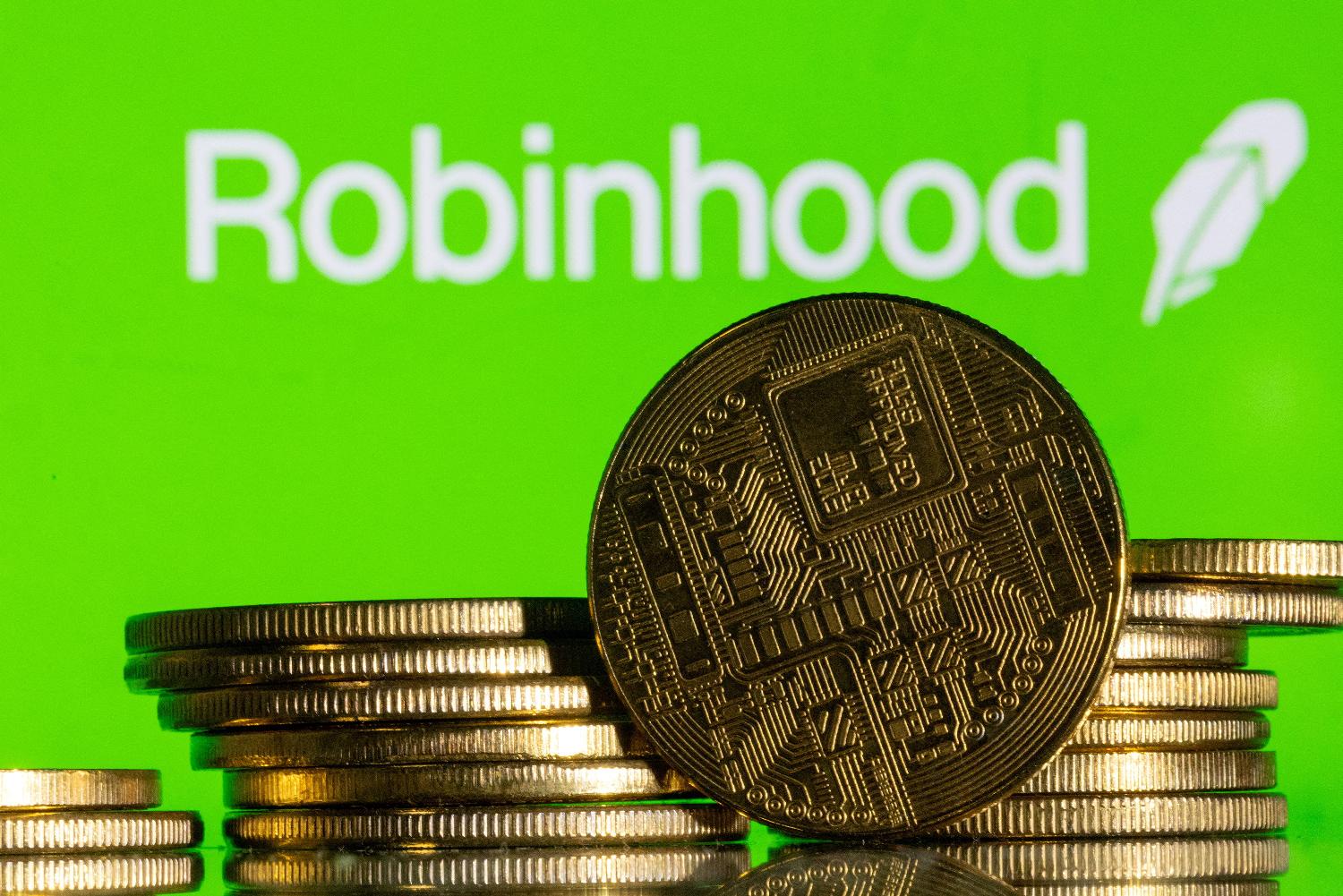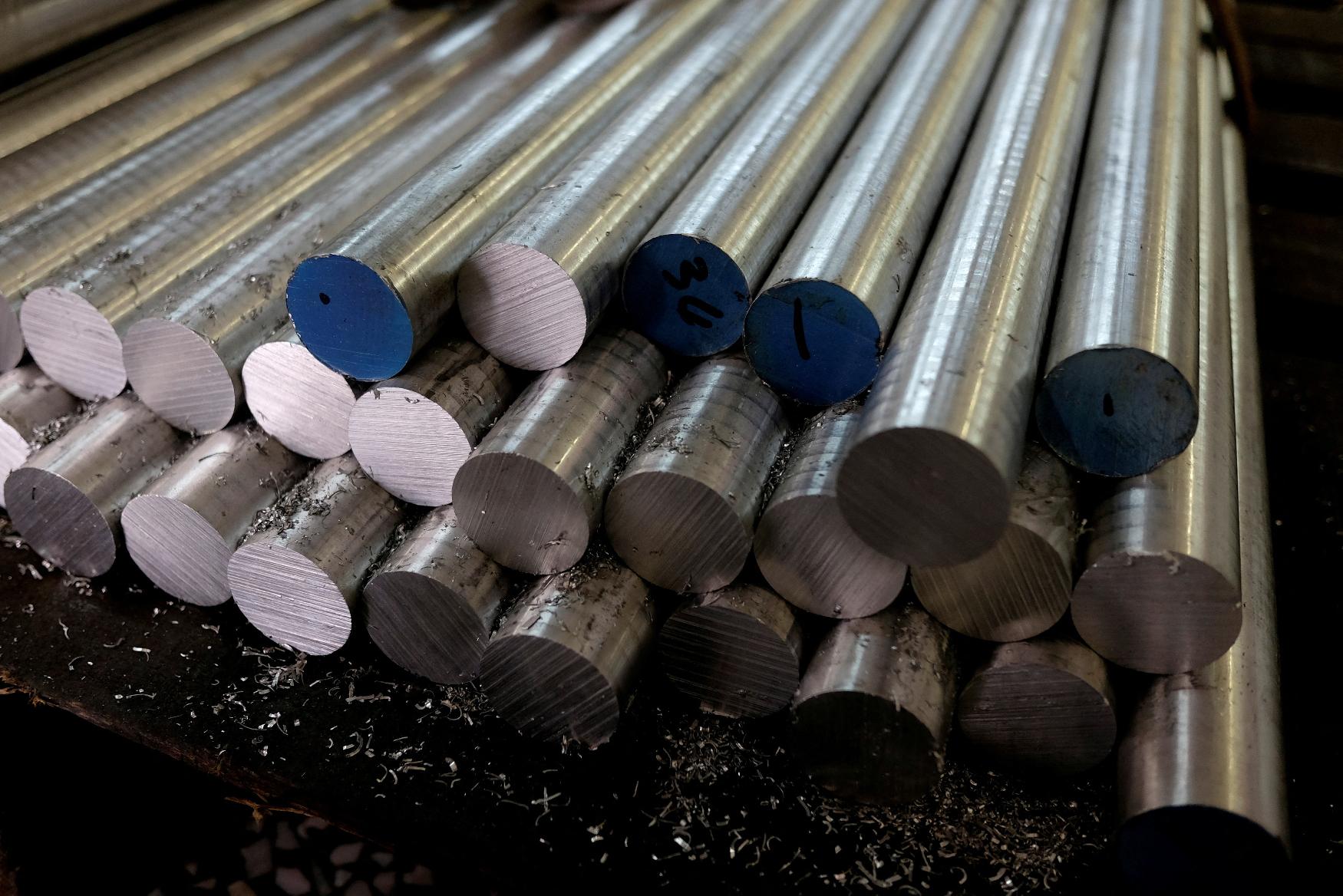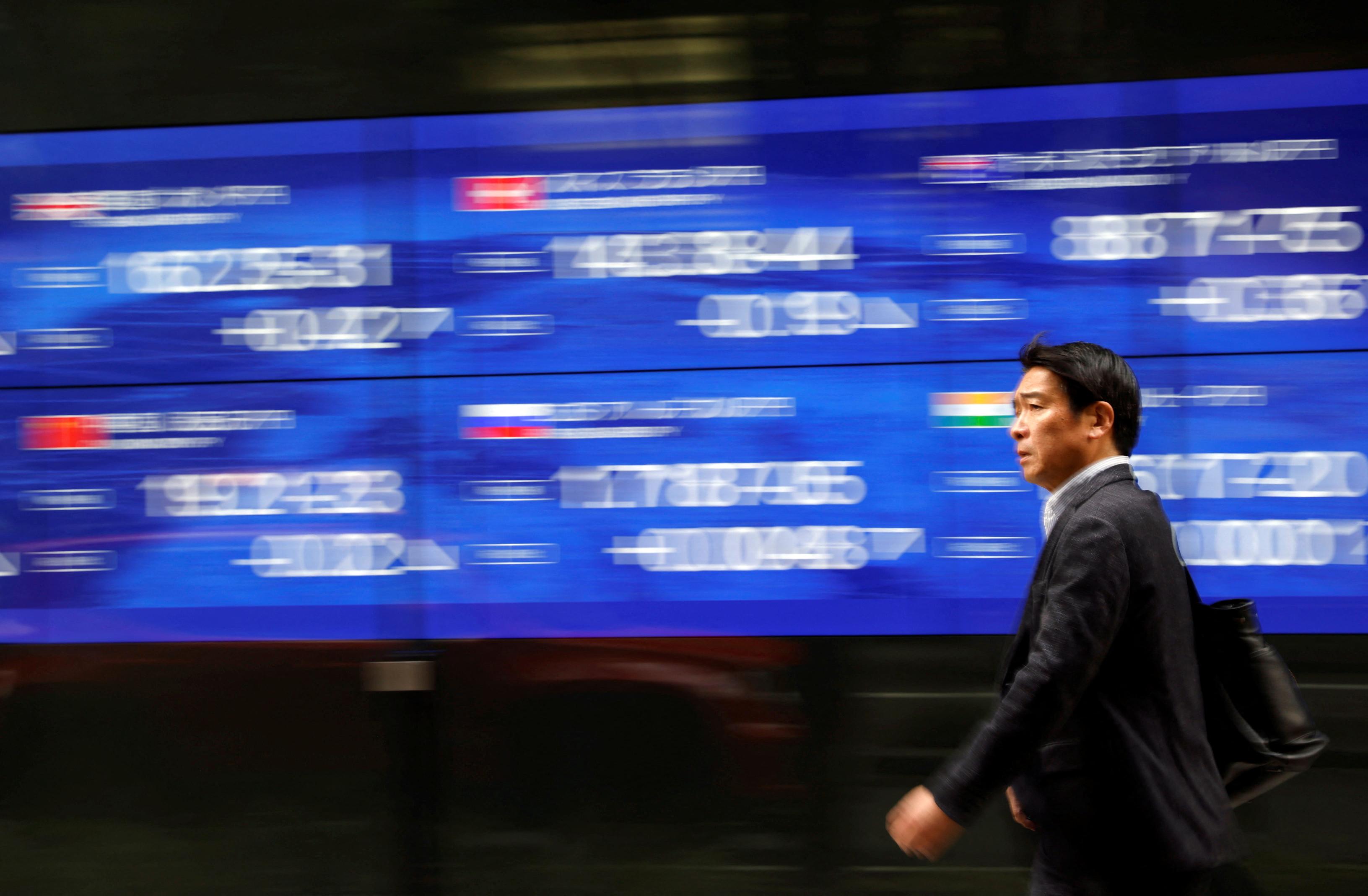
2024-09-04 23:28
Sept 4 (Reuters) - A cryptocurrency platform run by Robinhood Markets (HOOD.O) , opens new tab will pay $3.9 million to settle claims it failed to let customers withdraw cryptocurrency from their accounts from 2018 to 2022, California Attorney General Rob Bonta said on Wednesday. The civil settlement with Robinhood Crypto is the first public action by Bonta's office against a cryptocurrency company. Bonta said Robinhood violated California law by failing to deliver cryptocurrencies that its customers had bought, leaving customers unable to withdraw their assets and forcing them to sell the assets to exit the platform. The attorney general said Robinhood also misled customers about where their crypto assets were held, and by advertising it would connect customers to multiple trading venues to ensure they got competitive prices. Robinhood did not admit or deny wrongdoing. The settlement also requires the platform to let customers withdraw crypto assets to their own wallets, and honor its representations about its trading and order handling practices. Lucas Moskowitz, Robinhood's general counsel, in a statement said the Menlo Park, California-based company was pleased to settle, and looked forward to making cryptocurrency "more accessible and affordable to everyone." In a separate statement, Bonta said the settlement "should send a strong message: whether you're a brick-and-mortar store or a cryptocurrency company, you must adhere to California's consumer and investor protection laws." Robinhood shares rose 12 cents to $19.23 in after-hours trading. Sign up here. https://www.reuters.com/technology/robinhood-reaches-39-mln-settlement-with-california-over-crypto-withdrawals-2024-09-04/

2024-09-04 23:15
SINGAPORE, Sept 5 (Reuters) - The International Finance Corporation (IFC) has signed an agreement with Indonesian steelmaker PT Gunung Raja Paksi Tbk (GRP) (GGRP.JK) , opens new tab to support its shift to lower-carbon production and help it access green steel markets, it said on Thursday. In its first investment in the Asian steel sector for more than a decade, IFC will provide $60 million to help upgrade GRP's electric arc furnace (EAF) and boost energy efficiency, and will also explore ways to finance the decommissioning of GRP's blast furnace. IFC said its investment in Indonesia's largest private domestically-owned steel manufacturer could be the first of many projects aimed at tackling climate warming CO2 emissions in the steel industry. Antonio Della Pelle, IFC's senior operations officer, said the World Bank's financing arm plans to roll out similar projects and "drive sector-wide decarbonisation" through the use of EAF technology, which uses electricity rather than the coal that fuels traditional blast furnaces, bringing down emissions. IFC will also help GRP improve the performance of its current EAF operations and identify the products and sectors willing to pay a green premium on steel, he said. GRP's chief executive Kimin Tanoto said the company, located in West Java province, was planning to invest up to $600 million to upgrade its entire plant and position itself as a leading regional green steel producer. The company has already decided to write off a newly built and unused blast furnace, and hopes to apply for carbon credits when it is decommissioned in the new year. Della Pelle said IFC was also looking at various options to support the closure, including blended or sustainability-linked finance. "(The decommissioning) was the biggest sore point for our shareholders," said Tanoto. "But the same thing is going to happen to the entire industry ... My message was that we needed to be brave." The steel sector, responsible for around 8% of global greenhouse gas emissions, is coming under increasing pressure to switch to cleaner production methods as more countries introduce carbon tax regimes. Europe's Carbon Border Adjustment Mechanism (CBAM) will come into effect in 2026 and force importers to pay a levy on steel products depending on how much carbon dioxide they emit. GRP used to export around 80% of its flat steel products to Europe but it was unable to compete with giant Chinese manufacturers, but by raising the cost of traditional high-carbon steel products, CBAM could allow it to compete again in European markets, especially as green steel demand rises, Tanoto said. "We actually embrace the introduction of carbon tax and policies like CBAM," he said, "With the introduction of the carbon tax, we are quite sure we will be very competitive in the future." Sign up here. https://www.reuters.com/business/environment/world-banks-ifc-signs-green-financing-deal-with-indonesian-steel-mill-2024-09-04/

2024-09-04 23:00
LONDON, Sept 4 (Reuters) - China's primary aluminium smelters are producing record amounts of metal and the domestic market surplus is spilling out of the country in the form of semi-manufactured products. This sudden acceleration in "semis" exports is rekindling the flames of a long-simmering trade conflict. Western countries have repeatedly accused China of unfairly subsidising its aluminium and steel sectors, claiming the country's excess capacity is swamping global markets. The World Trade Organization (WTO) said last month that it was unable to get a clear picture of China's financial support for key industrial sectors due to an "overall lack of transparency". With no means of negotiating a multilateral remedy, countries are increasingly turning to unilateral tariffs to protect themselves from the renewed Chinese flood. CRANKING UP THE VOLUME China's production of primary aluminium hit a fresh monthly peak of 3.690 million metric tons in July, according to the International Aluminium Institute. Output rose 4.9% on a year-on-year basis in the first seven months of 2024 and the collective run-rate reached an annualised 43.5 million tons in July. The country's production rate is closing in on the government's 45-million-ton annual capacity cap now that increased rainfall in the hydro-rich province of Yunnan has enabled smelters to restart capacity that was idled earlier this year. The problem is that China's domestic demand hasn't been strong enough to absorb this much aluminium. Although demand remains resilient in new energy applications such as solar panels and electric vehicles, domestic appetite is being constrained by weakness in both the construction and broader manufacturing sectors. The surplus aluminium is being exported in the form of semi-manufactured products such as plate, rods, tubes and foil. Semi-manufactured product exports fell 14.9% last year but rebounded by a similar margin to almost 3.0 million tons in the first half of 2024, according to LSEG trade data. Outbound shipments of 566,400 tons in July were the highest monthly tally since July 2022. FORTRESS AMERICA The U.S. has led the push-back against Chinese exports of both aluminium and steel in recent years. There have been multiple anti-dumping and countervailing duties imposed on Chinese products, overlaying the broader 10% aluminium import tariffs initiated in 2018 using so-called Section 232 national security powers. None of which has halted the flow of Chinese products into the U.S. market. China exported 210,000 tons of aluminium to the U.S. last year, making it the sixth-biggest destination by volume. The Biden administration is now preparing to up the ante. In April it asked the Office of the U.S. Trade Representative to consider tripling duties , opens new tab to 25% on both Chinese steel and aluminium products, using Section 301 powers designed to protect the country from "unfair" trade practices. Mexico and Canada, which both enjoy exemptions from the Section 232 tariffs, are also being corralled into action. Mexico was the top destination for Chinese aluminium product exports last year with outbound shipments of 511,000 tons, according to LSEG data. Another 200,000 tons were shipped to Canada, making it the seventh-largest export market. Both countries have been accused , opens new tab of acting as transshipment corridors for Chinese aluminium surplus in the form of remelted product. Canada will start imposing a 25% surtax on imports of both Chinese aluminium and steel on Oct. 15. Mexico was due to lift duties by a similar amount but changed its mind in May. The government argued it would have placed too high a burden on the country's aluminium consumers. The U.S. has responded , opens new tab by requiring aluminium product imports from Mexico to be accompanied by a certificate of analysis proving they have not been derived from Chinese metal either at the smelting or casting stage of the production process. Those that fail to satisfy the country of ultimate origin test will no longer be exempt from the Section 232 tariffs. FRACTURED WORLD Others are following the U.S. lead by shoring up their own trade defences against Chinese imports. India's trade ministry has just recommended , opens new tab imposing an anti-dumping duty on aluminium foil imported from China after surging shipments from the neighbouring country captured nearly a third of India's market share despite ample local production capacity. The European Union has, like the U.S., already hit Chinese aluminium imports with multiple product-specific anti-dumping penalties. But the carbon border adjustment mechanism, due to come into effect in 2026, will form another broader line of defence against Chinese aluminium, most of which comes with a relatively high carbon footprint. The more aluminium China produces, the more tariff walls are going to be erected, as the West looks to protect its domestic supply chains from what David Bisbee, the U.S. deputy permanent representative at the WTO, described as China's "predatory" industrial policy aimed at global domination. The WTO is proving to be an ineffective forum for resolving what amounts to a clash of systems between Western free market orthodoxy and China's state-led industrial model. So countries are increasingly left with no other choice but to take their own unilateral actions, fracturing what was once a highly globalised market. The cracks will only widen if China's exports keep rising. Sign up here. https://www.reuters.com/markets/commodities/west-plugs-defences-china-cranks-up-aluminium-output-2024-09-04/

2024-09-04 21:50
Sept 5 (Reuters) - A look at the day ahead in Asian markets. Investors in Asia are bracing for a wave of top-tier economic data releases on Thursday, as they continue to process this week's market turbulence sparked by worries that the sought-after U.S. economy's 'soft landing' could end in something far less benign. The Nasdaq and S&P 500 and world stocks slipped further on Wednesday and equity volatility rose again, although by smaller margins. This could give some solace to those looking for Asian markets to rebound on Thursday from their Wednesday slump. But that will likely be more in hope than expectation as sentiment has turned decidedly bearish. Figures on Wednesday showed that U.S. job openings slumped to a 3-1/2-year low in July, the latest sign that the labor market is losing steam, and another signal for investors to sell stocks, buy bonds, and position for deeper rate cuts. U.S. rates futures are now roughly putting a 50-50 probability on the Fed delivering a 50 basis point rate cut later this month and are pricing in 225 bps of easing by the end of next year. That's a level of policy easing historically consistent with recession. For Asian and emerging markets, falling U.S. yields and a weaker dollar are often positive signals. But not when they're reflecting a potential recession on the horizon. Signs of slowdown are mounting. The two-year U.S. Treasury yield hit its lowest since May last year, Brent crude oil hit its lowest this year and is down 8% this week, and China's 10-year bond yield is again flirting with its recent record low. That's the backdrop for a big day in the Asian calendar on Thursday, when Thailand, Taiwan and the Philippines release August inflation figures, Malaysia's central bank announces an interest rate decision, and South Korea publishes revised second-quarter GDP data. Malaysia's central bank is expected to leave its key policy rate unchanged at 3.0% and keep it there until 2026. The Malaysian ringgit has emerged in recent weeks as the best performing Asian currency this year. This helps keep a lid on inflation, and with global volatility rising and the Fed about to cut U.S. rates, the ringgit could stay stronger for longer. Another buoyant Asian currency is Japan's yen, as yen-funded carry trades are unwound and the currency fulfills its traditional role as a safe harbor for investors in stormy times. It rose around 1% against the dollar for a second day on Wednesday, and could be about to break into a new, stronger trading range. Headline annual CPI inflation in the Philippines, meanwhile, is expected to slow to 3.6% from 4.4%, essentially halve to 0.4% from 0.83% in Thailand, and cool to 2.27% from 2.52% in Taiwan. Disinflation all around. Here are key developments that could provide more direction to Asian markets on Thursday: - The Philippines, Thailand, Taiwan - CPI inflation (August) - Malaysia central bank interest rate decision - South Korea GDP (Q2, revised) Sign up here. https://www.reuters.com/markets/asia/global-markets-view-asia-graphic-pix-2024-09-04/

2024-09-04 20:58
BRASILIA, Sept 4 (Reuters) - Brazil's Senate will vote on the nomination of current central bank's director Gabriel Galipolo as the new chief of the monetary authority on October 8, chief of the upper house Rodrigo Pacheco said on Wednesday. Before the confirmation voting in Senate, Galipolo's nomination by President Luiz Inacio Lula da Silva needs to be discussed in a Senate committee hearing, which has not been scheduled yet. Lula's administration intended to push the confirmation voting in Senate before the next rate-setting committee meeting on September 17-18, but has faced resistance from lawmakers which wanted to do it only after municipal elections in early October. Government disclosed last week the broadly-expected nomination of Galipolo, the director of monetary policy, to be the new central bank governor replacing Roberto Campos Neto, whose term ends in December. Sign up here. https://www.reuters.com/world/americas/brazils-senate-vote-galipolos-nomination-cenbank-chief-oct-8-2024-09-04/

2024-09-04 20:51
BRASILIA, Sept 4 (Reuters) - Brazil's government expects public debt linked to interest and foreign exchange rates to surpass half of the total debt this year, a level last seen in October 2006, the Treasury indicated in a revision of its annual financing plan on Wednesday. Known as LFTs, the bonds tied to the country's benchmark interest rate, Selic, typically reduce predictability in debt management. The government is trying to use fewer LFTs long-term but these bonds are more sought by investors during periods of risk aversion, which occurred this year due to uncertainties surrounding U.S. monetary policy, the Treasury noted. Brazil's benchmark interest rate currently stands at 10.5%, and futures indicate a potential hike at the central bank's next policy meeting on Sept. 17-18 . If confirmed, this would increase the Treasury's cost of servicing these securities. Exchange rate-linked bonds are also considered more volatile. The Brazilian real has weakened by about 14% against the U.S. dollar this year, making this portion of the public debt more expensive in local currency. The currency fell amid monetary uncertainties in the U.S. and fiscal fears in Brazil. On Wednesday, the Treasury raised the expected share of interest rate-linked bonds to 43%-47% of federal public debt from a previous range of 40%-44%, while maintaining the expected range for exchange rate-linked bonds at 3%-7%. As of July, these bonds accounted for 44.95% and 4.44% of the total debt, respectively, with the Treasury's adjustment suggesting they will surpass 50% of total debt by year-end. The deputy secretary for public debt, Otavio Ladeira, said the anticipated increase in the exchange rate-linked portion of the debt is manageable given Brazil's robust international reserves and the relatively low share of debt tied to foreign exchange, a stark contrast to the situation seen 18 years ago. Regarding LFTs, Ladeira noted at a press conference that the expectation of rising interest rates impacts the entire yield curve, including fixed-rate bonds. "The cost ends up being the same or even higher (for fixed-rate bonds) depending on how much the market is pricing in the interest rate hike relative to what actually happens over time," he added. Ladeira said the Treasury was committed to improving the debt composition, aiming to reduce the share of interest rate-linked bonds to 23% by 2035, about half the current level. In the revision, the Treasury also lowered the expected share of inflation-linked bonds to 25%-29% of total public debt this year from a previous 27%-31%. It also reduced the expected share of fixed-rate bonds to 22%-26%, from 24%-28% previously. It still expects to end 2024 with public debt between 7 trillion and 7.4 trillion reais ($1.24-1.31 trillion), arguing that the revised debt composition allows for a strategy more in line with market conditions - without adding pressure on the pricing of bonds to be offered for the remainder of the year. ($1 = 5.6326 reais) Sign up here. https://www.reuters.com/markets/brazils-public-debt-linked-interest-rates-fx-poised-surpass-half-total-debt-2024-2024-09-04/
